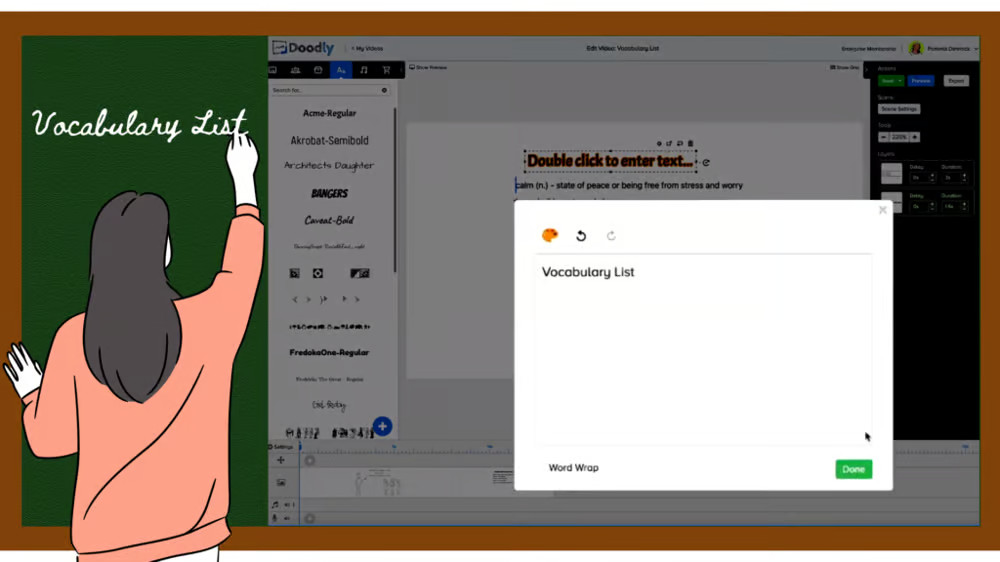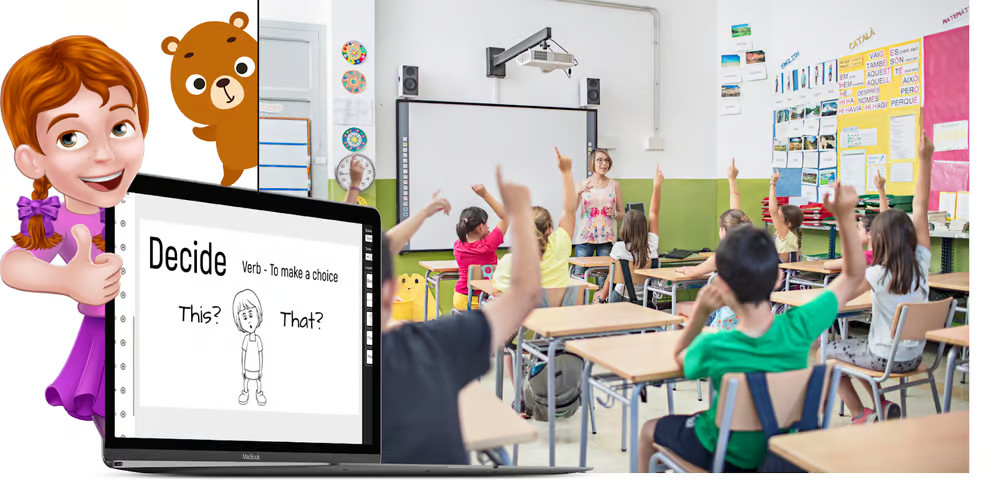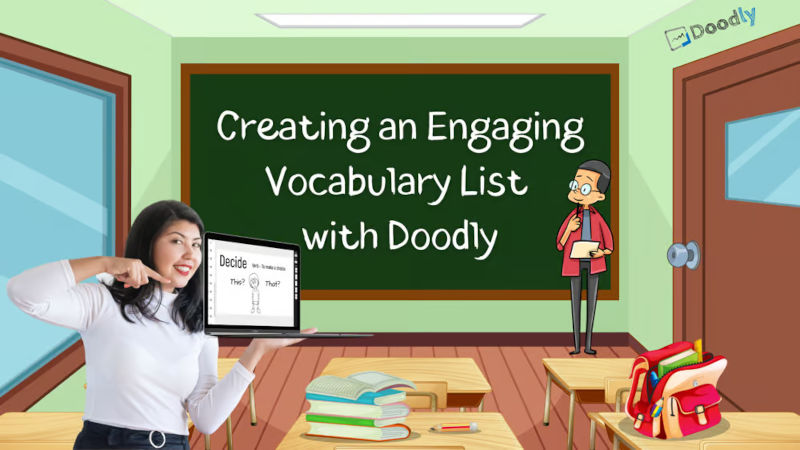Free
Creating an Engaging Vocabulary List with Doodly
Teaching vocabulary can be a challenge, but with the help of Doodly, it can become exciting and effective. Doodly is a whiteboard animation software that brings vocabulary lessons to life. In this article, we’ll show you how to create engaging word lists using Doodly, regardless of your teaching experience.
Introducing Doodly for Vocabulary Learning
Traditional methods of teaching vocabulary may not always capture students’ attention. That’s where Doodly comes in. With its graphics, animations, and audio features, Doodly allows educators to create interactive and visually appealing videos to make learning more engaging. Say goodbye to boring word lists on the board and say hello to dynamic and fun vocabulary lessons with Doodly.
More Benefits of Using Doodly
In addition to being engaging, Doodly also makes vocabulary learning memorable. By incorporating visual and audio cues, students can easily remember the words they learn. This is especially helpful for visual or auditory learners who benefit from multimedia approaches. Plus, Doodly is user-friendly, making it accessible to educators of all tech-savviness levels.
Creating a Vocabulary Word List with Doodly
Now, let’s dive into the step-by-step process of creating a word list with Doodly. We’ll guide you through setting up the title, adding words, definitions, and illustrations, and adjusting the video length.
Step 1: Setting up the Title

Begin by selecting a font and writing the title of your word list. Choose a font that is easy to read and visually appealing, keeping your lesson objectives in mind.
Step 2: Adding the Words
Next, type in each word, one by one, using a font that suits your objectives. Provide an overview of the words before going into details to help students understand the context and purpose of the list.
Step 3: Adding Definitions and Illustrations

For each word, create a new scene and add a definition and illustration. Use visual aids like props, characters, or pictures to keep the illustrations simple and easy to understand. Add audio narration or background music to enhance engagement.
Step 4: Adjusting the Length of the Video
After adding the words, definitions, and illustrations, adjust the video length. You can do this by adjusting the delay and duration of each asset or adding extra time at the end of each scene. Aim for a 3-5 minute video that suits the complexity of the vocabulary and the age of your students to maintain engagement.
Step 5: Using Your Doodly Vocabulary Video in the Classroom

You’ve created an awesome vocabulary word list with Doodly, now it’s time to use the video in the classroom! You have a few options – you can show the video to your students during a class session, or you can send a link to parents and students so they can watch it at home. You can also use the video to review the words or incorporate it into a larger lesson plan.
Here are some tips to make your vocabulary video even more engaging and effective for your students:
1. Make the Video Part of Your Lesson Plan:
You can use the video to introduce a new lesson or as a review tool for previously learned words. It’s also great for facilitating discussions or group activities related to the vocabulary.
2. Assign the Video as Homework:
Give your students a chance to watch the video at home and take notes on the new words. You can even create a quiz or game show to test their understanding. This gets parents involved in the learning process too!
3. Get Students Involved:
Encourage your students to create their own vocabulary word lists with Doodly. They can also make their own illustrations and definitions for the words in the video. As a fun activity, they can present the new words to the class or create their own quizzes or game shows.
4. Make Learning Fun and Memorable:
Use interactive activities, multimedia, and humor to make learning new words relatable and enjoyable for your students.
Choosing the Right Graphics and Audio for Your Vocabulary Video
Now let’s talk about how to choose the perfect graphics and audio for your vocabulary video:
– Keep it simple: Choose graphics that are easy to understand and visually appealing. Avoid cluttered images that might distract students from the words.
– Be consistent: Maintain a consistent style throughout the video to help students stay focused on the words.
– Use high-quality images and audio: Clear and easy-to-understand visuals and audio tracks make a big difference in the effectiveness of your video.
– Use sound effects sparingly: Sound effects can enhance the video, but use them only when necessary and make sure they’re relevant.
– Match the tone: Choose graphics and audio that suit the tone of your lesson. For serious academic vocabulary, go for formal and straightforward visuals and audio.
– Consider the audience: Adapt your graphics and audio to suit the age and preferences of your students. Young learners might enjoy colorful and playful visuals.
– Don’t overdo it: While graphics and audio can enhance the video, be careful not to overwhelm your students with too much of them. Remember, the main focus is on learning the words.
By keeping these tips in mind, you’ll be able to choose the perfect graphics and audio tracks to enhance your vocabulary word list video and keep your students engaged.
In conclusion, Doodly is an amazing tool for creating engaging and effective vocabulary lessons. By using Doodly to make your vocabulary word list, you can help your students learn and remember new words in a fun and memorable way.
Some of the benefits of using Doodly include interactive learning, increased retention, and ease of use. With Doodly, you can create animated whiteboard videos with illustrations, definitions, and audio narration easily.
Incorporating the Doodly video into your lesson plans and assigning it as homework will make learning enjoyable and memorable for your students. Encouraging student participation and engagement will help them master new words and improve their language skills.
Overall, Doodly offers an innovative and effective solution for creating engaging vocabulary lessons. Give it a try and discover how it can revolutionize the way you teach vocabulary!






























